There is no doubt that sled pulls work for building acceleration. Scientists may not agree on why they work but the fact that they work is undeniable.
In a nutshell. If you want faster sprint acceleration, do sled pulls.
The big question is, should you go light or heavy? What about very heavy sled pulls? How much is too much?
Science has the answer, and so do we.
Let’s get started.
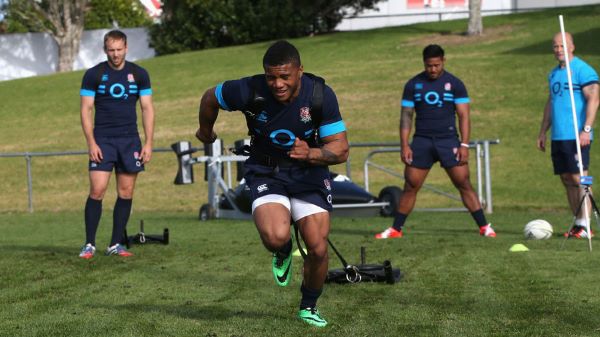
How Do Sled Pulls Give You Better Acceleration?
When it comes to the reason why doing sled pulls make you accelerate faster there are 2 schools of thought:
- Some researchers say that neuromuscular adaptation that takes place. Meaning the resistance of the sled teaches you to fire harder with each step, therefore generating more force into the ground.
- The resistance of the sled teaches better mechanics. Meaning that weighted sled pulls may help athletes apply more force horizontally rather than vertically, therefore, improving their ability to accelerate.
Which school of thought is correct? I like to lean toward the first one myself but it’s probably a combination of both.
Related: Best Weighted Sleds on the Market
Heavy Sled Pulls vs Light Sled Pulls – The Research
The first big study comparing light vs heavy sled pulls for acceleration was published by the Journal of Strength and Conditioning Research back in 2013. In this study, researchers split 21 men into 2 groups. Both groups would perform 2 training sessions per week for 8 weeks. One group would use a weight that would reduce sprint velocity by 30% and while the other group used a weight that would reduce it by 10%, respectively.
The results found that “The heavy group significantly improved both the 5- and 10-m sprint time by 5.7 ± 5.7% and 5.0 ± 3.5%, respectively (P < 0.05), whereas only 10-m sprint time was improved significantly by 3.0 ± 3.5% (P < 0.05) in the light group”
These results question the notion that training loads that induce a greater than 10% reduction in sprint velocity would negatively affect sprint performance. Of course, more studies followed. Study1
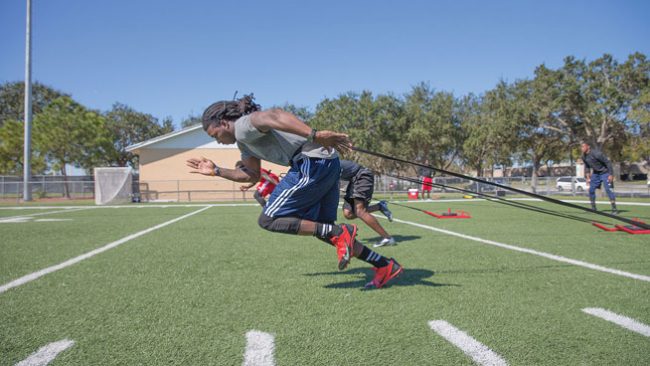
What About Very Heavy Sled Pulls?
If heavy is better, would going very heavy be even better still?
Researchers decided to try testing out very heavy sled pulls to see how effective they would be on sprint acceleration.
For this study in the International Journal of Sports Physiology and Performance, they split 16 male soccer players into 2 groups. The groups would perform 2 training sessions per week for 8 weeks. One group would perform very heavy sled sprint pulls for 10-20 meters pulling 80% of their body weight. The other group would perform the same sprints but with no resistance.
The results: “The main outcome of this pilot study is that very-heavy sled-resisted sprint training, using much greater loads than traditionally recommended, clearly increased maximal horizontal-force production compared with standard unloaded sprint training”
So even doing very heavy sled training is shown to be beneficial for sprinting acceleration. I only wish they had also used groups doing light sled pulls and heavy sled pulls so we could compare them as well. Luckily, someone did! Study2
But Wait, There’s More!
In October of 2020, they did a study using high school athletes pulling sleds. This time they split them into 4 groups. They would all be performing sprint training of 5, 10, and 20 meters twice a week for 8 weeks. One group trained without any resistance, the other groups used a weight that caused a 25, 50, and 75% velocity decrement in maximum sprint speed.
The results of this study stated that: “the magnitude of the gains increased most within the heaviest group, with the greatest improvement observed over the first 10 m (d ≥ 1.04)” they went on to say “The results of this study suggest that the greatest gains in short distance sprint performance, especially initial acceleration, are achieved using much heavier sled loads than previously studied in young athletes.” Study3
What About Even Heavier Sled Pulls?
I know what you are thinking, what about going even heavier?
A study was done by Winwood and colleagues in 2016 looked at the effects of extremely heavy sled pulls.
This study used 2 groups of rugby players doing sprint sled training twice a week for 8 weeks. One group would pull a sled loaded with 75% of their body weight while the second group did sled pulls with 150% of their body weight.
The results of the study were: “it can be concluded that the lighter sled load (75% body mass) was a significantly more effective preload stimulus for improving subsequent sprint performance”.
Therefore heavier sled pulls are better but only to a point, 150% of your body weight is too much and is ineffective. Study4
What About Sled Pushes Instead of Pulls?
One has to wonder, if pulling the sled is effective, does pushing the sled work as well? There is a study for that too.
In 2019 there was a study done that looked at the effectiveness of unresisted and resisted sled pushing across multiple loads. This study was performed using a group that trained without resistance as well as groups that used a weight that caused a 25, 50, and 75% velocity decrement in maximum sprint speed. They trained 2 times a week for 8 weeks.
The Results: “The results of this study suggest that resisted sled pushing with any load was superior to unresisted sprint training and that heavy loads may elicit the greatest gains in sprint performance over short distances”
So, pushing the sled also works and heavier is better. Study5
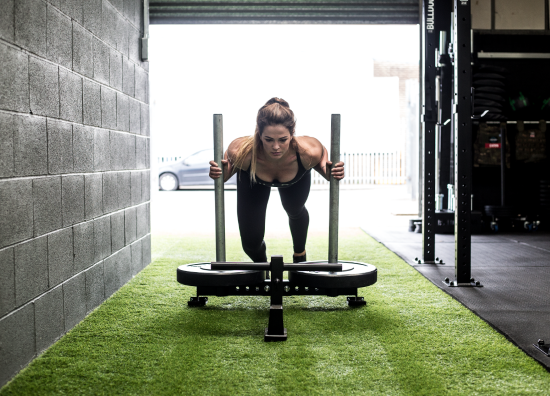
Related: 7 Best Core Exercises for Sprint Speed
Related: Why All Athletes Should Be Doing Sled Pushes and Pulls
What About Parachute Sprint Training?
I’m sure you’ve seen photos of pro athletes doing sprints with a parachute behind them. Looks impressive, does it do anything though?
Research shows that it does work. The study found that “Resisted sprint training with large size parachute improved velocity in the acceleration phase and maximum speed phase in sprinter”. Study6
The parachute also has its drawbacks though.
One drawback is that the parachute may take 10-20 meters to completely inflate, therefore you have little to no resistance during the acceleration phase of your sprint.
Another drawback is that the resistance can’t really be increased or decreased with a parachute, unlike how you can just add or remove weight with a sled. The wind is another variable that can affect the parachute as well.
Do Sled Pulls Help With Top End Speed?
Unfortunately, weighted sled pulls do not help with top-end sprint speed.
Researched looked at 13 different sled pull studies and found that sled training significantly improved sprint speed during the acceleration phase, slightly increased sprint speed for sprints greater than 20 meters and they found that sled training had no significant impact on top-end speed. Research
Bottom line…
Sled pulls will help you with acceleration and will help get you to top speed faster but they will not help you with your top speed.
If you are looking to increase your top-end speed then parachute training will be the way to go for that.
What to do with this info?
It seems pretty clear that if you want to increase your sprint acceleration that doing sled pulls is superior to no resistance at all. In fact, the research showed sprint training without resistance did basically nothing to improve acceleration.
The research we looked at showed that heavier is clearly better than light loads when pulling and pushing the sled. So should you ditch light sled pulls altogether and just go heavy? No. I would do a combination of light, heavy, and very heavy sled pulls as part of training with an emphasis on the heavier pulls. Keep the load you are pulling between 10-75% of your bodyweight, anything higher than that is too much.
Something else to look at for increasing your running speed is the Athlete Speed System by Overtime Athletes. It is a complete program that gives you all the right exercises, mechanics training and much more to have you running as fast as your genetics will allow.
There you have it, if you want faster acceleration, do your sled pulls and pushes, and don’t be afraid to go heavy.
Sled pulls/pushes won’t help with top-end speed, though, you would be better off doing parachute training for that.

Ryan is a former college wrestler and lifelong fitness fanatic. He has run half marathons, done mud runs, placed in body transformation contests, coached wrestling, and now coaches girls’ soccer. Not to mention he has also tried literally hundreds of supplements over the years and has a vast and thorough supplement knowledge. He has written for Muscle & Strength, Testosterone Junkie, The Sport Review and other publications. He is also the editor-in-chief of this website and has over 25 years of experience in the fitness industry. Feel free to connect with him on his LinkedIn page below.
References
Study 1: researchgate.net/publication/236090495_Effects_of_Weighted_Sled_Towing_With_Heavy_Versus_Light_Load
Study 2: https://pubmed.ncbi.nlm.nih.gov/27834560/

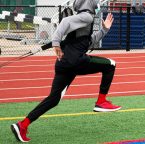

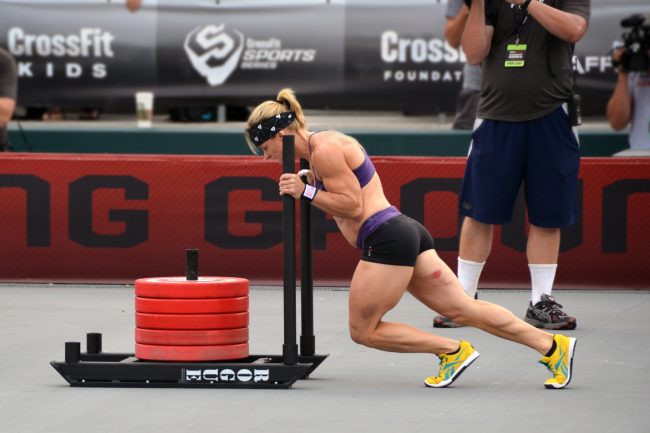
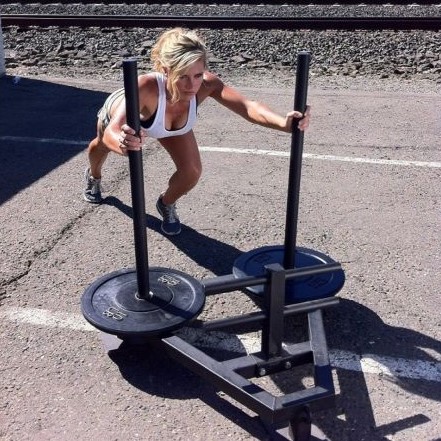




Thanks man, the acticle has cleaned some mess in my head